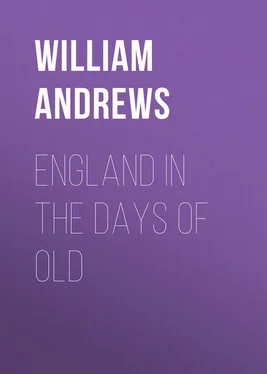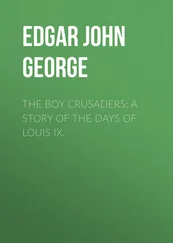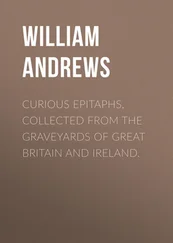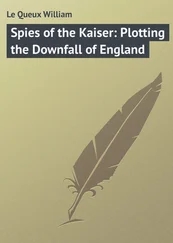William Andrews - England in the Days of Old
Здесь есть возможность читать онлайн «William Andrews - England in the Days of Old» — ознакомительный отрывок электронной книги совершенно бесплатно, а после прочтения отрывка купить полную версию. В некоторых случаях можно слушать аудио, скачать через торрент в формате fb2 и присутствует краткое содержание. ISBN: , Жанр: foreign_antique, foreign_prose, на английском языке. Описание произведения, (предисловие) а так же отзывы посетителей доступны на портале библиотеки ЛибКат.
- Название:England in the Days of Old
- Автор:
- Жанр:
- Год:неизвестен
- ISBN:http://www.gutenberg.org/ebooks/38905
- Рейтинг книги:4 / 5. Голосов: 1
-
Избранное:Добавить в избранное
- Отзывы:
-
Ваша оценка:
- 80
- 1
- 2
- 3
- 4
- 5
England in the Days of Old: краткое содержание, описание и аннотация
Предлагаем к чтению аннотацию, описание, краткое содержание или предисловие (зависит от того, что написал сам автор книги «England in the Days of Old»). Если вы не нашли необходимую информацию о книге — напишите в комментариях, мы постараемся отыскать её.
England in the Days of Old — читать онлайн ознакомительный отрывок
Ниже представлен текст книги, разбитый по страницам. Система сохранения места последней прочитанной страницы, позволяет с удобством читать онлайн бесплатно книгу «England in the Days of Old», без необходимости каждый раз заново искать на чём Вы остановились. Поставьте закладку, и сможете в любой момент перейти на страницу, на которой закончили чтение.
Интервал:
Закладка:
As might be expected, Pepys, who delighted to be in the fashion, adopted the wig. He took time to consider the matter, and had consultations with Mr. Jervas, his old barber, about the affair. Referring in his “Diary” to one of his visits to his hairdresser, Pepys says “I did try two or three borders and periwigs, meaning to wear one, and yet I have no stomach for it; but that the pains of keeping my hair clean is great. He trimmed me, and at last I parted, but my mind was almost altered from my first purpose, from the trouble which I forsee in wearing them also.” Weeks passed before he could make up his mind to wear a wig. Mrs. Pepys was taken to the periwig-maker’s shop to see the one made for Mr. Pepys, and expressed her satisfaction on seeing it. We read in April, 1665, of the wig being at Jervas’ under repair. Early in May, Pepys writes in his “Diary,” he suffered his hair to grow long, in order to wear it, but he said “I will have it cut off all short again, and will keep to periwigs.” Later, under date of September 3rd, he writes: “Lord’s day. Up; and put on my coloured silk suit, very fine, and my new periwig, bought a good while since, but durst not wear, because the plague was in Westminster when I bought it; and it is a wonder what will be in fashion, after the plague is done, as to periwigs, for nobody will dare to buy any hair, for fear of the infection, that it had been cut off the heads of people dead of the plague.”
We learn from an entry in the “Diary” for June 11th, 1666, that ladies in addition to assuming masculine costume for riding, wore long wigs. “Walking in the galleries at Whitehall,” observes Mr. Pepys, “I find the ladies of honour dressed in their riding garbs, with coats and doublets with deep skirts, just for all the world like mine, and buttoned their doublets up the breast, with periwigs and with hats, so that, only for long petticoats dragging under their men’s coats, nobody could take them for women in any point whatever.”
Pepys, we have seen, wondered if periwigs would survive after the terrible plague. He thought not, but he was mistaken. Wigs still remained popular. The plague passed away, and its terrors were forgotten. The world of folly went on much as of yore, perhaps with greater gaiety, as a reaction to the lengthened time of depression.
In some instances the wig appears much out of place, and a notable example is that given in the portrait by Kneller, of George, Earl of Albemarle. He is dressed in armour, and wearing a long flowing wig. Anything more absurd could scarcely be conceived.
The beau of the period when the wig was popular carried in his pocket beautifully made combs, and in his box at the play, or in other places, combed his periwig, and rendered himself irresistible to the ladies. Making love seems to have been the chief aim of his life. Sir John Hawkins, in his “History of Music,” published in 1776, has an informing note on combing customs. “On the Mall and in the theatre,” he tells us, “gentlemen conversed and combed their perukes. There is now in being a fine picture by the elder Laroon of John, Duke of Marlborough, at his levée , in which his Grace is represented dressed in a scarlet suit, with large white satin cuffs, and a very long white peruke which he combs, while his valet, who stands behind him, adjusts the curls after the comb has passed through them.” Allusions to the practice may be found in the plays from the reign of Charles II. down to the days of Queen Anne. We read in Dryden’s prologue to “Almanzor and Almahide” —
“But as when vizard mask appears in pit,
Straight every man who thinks himself a wit
Perks up, and, managing a comb with grace,
With his white wig sets off his nut-brown face.”
Says Congreve, in the “Way of the World”: —
“The gentlemen stay but to comb, madam, and will wait on you.”
Thomas Brown, in his “Letters from the Dead to the Living” presents a pen portrait of beaux, as they appeared at the commencement of the eighteenth century. Some of the passages are well worth reproducing, as they contain valuable information concerning wigs. “We met,” says the writer, “three flaming beaux of the first magnitude. He in the middle made a most magnificent figure – his periwig was large enough to have loaded a camel, and he bestowed upon it at least a bushel of powder, I warrant you. His sword-knot dangled upon the ground, and his steinkirk, that was most agreeably discoloured with snuff from the top to the bottom, reach’d down to his waist; he carry’d his hat under his left arm, walk’d with both hands in the waistband of his breeches, and his cane, that hung negligently down in a string from his right arm, trail’d most harmoniously against the pebbles, while the master of it was tripping it nicely upon his toes, or humming to himself.” Down to the middle of the eighteenth century, wigs continued to increase in size.
It will not now be without interest to direct attention to a few of the many styles of wigs.
Randle Holme, in his “Academy of Armory,” published in 1684, has some interesting illustrations, and we will draw upon him for a couple of pictures. Our first example is called the campaign-wig. He says it “hath knots or bobs, or dildo, on each side, with a curled forehead.” This is not so cumbrous as the periwig we have noticed.
Another example from Holme is a smaller style of periwig with tail, and from this wig doubtless originated the familiar pig-tail. It was of various forms, and Swift says: —
“We who wear our wigs
With fantail and with snake.”
A third example given by Holme is named the “short-bob,” and is a plain peruke, imitating a natural head of hair. “Perukes,” says Malcolm, in his “Manners and Customs,” “were an highly important article in 1734. Those of right gray human hair were four guineas each; light grizzle ties, three guineas; and other colours in proportion, to twenty-five shillings. Right gray human hair, cue perukes, from two guineas; white, fifteen shillings each, which was the price of dark ones; and right gray bob perukes, two guineas and a half; fifteen shillings was the price of dark bobs. Those mixed with horsehair were much lower. It will be observed, from the gradations in price, that real gray hair was most in fashion, and dark of no estimation.” As time ran its course, wigs became more varied in form, and bore different names.
We find in the days of Queen Anne such designations as black riding-wigs, bag-wigs, and nightcap-wigs. These were in addition to the long, formally curled perukes. In 1706, the English, led by Marlborough, gained a great victory on the battlefield of Ramillies, and that gave the title to a long wig described as “having a long, gradually diminishing, plaited tail, called the ‘Ramillie-tail,’ which was tied with a great bow at the top, and a smaller one at the bottom.” It is stated in Read’s Weekly Journal of May 1st, 1736, in a report of the marriage of the Prince of Wales, that “the officers of the Horse and Foot Guards wore Ramillie periwigs by his Majesty’s order.” We meet in the reign of George II. other forms of the wig, and more titles for them; the most popular, perhaps, was the pigtail-wig. The pig-tails were worn hanging down the back, or tied up in a knot behind, as shown in our illustration. This form of wig was popular in the army, but in 1804, orders were given for it to be reduced to seven inches in length, and finally, in 1808, to be cut off.
Here is a picture of an ordinary man; by no means can he be regarded as a beau. He is wearing a common bag-wig, dating back to about the middle of the eighteenth century. The style is modified to suit an individual taste, and for one who did not follow the extreme fashion of his time. In this example may be observed the sausage curls over the ear, and the frizziness over the forehead.
Читать дальшеИнтервал:
Закладка:
Похожие книги на «England in the Days of Old»
Представляем Вашему вниманию похожие книги на «England in the Days of Old» списком для выбора. Мы отобрали схожую по названию и смыслу литературу в надежде предоставить читателям больше вариантов отыскать новые, интересные, ещё непрочитанные произведения.
Обсуждение, отзывы о книге «England in the Days of Old» и просто собственные мнения читателей. Оставьте ваши комментарии, напишите, что Вы думаете о произведении, его смысле или главных героях. Укажите что конкретно понравилось, а что нет, и почему Вы так считаете.












